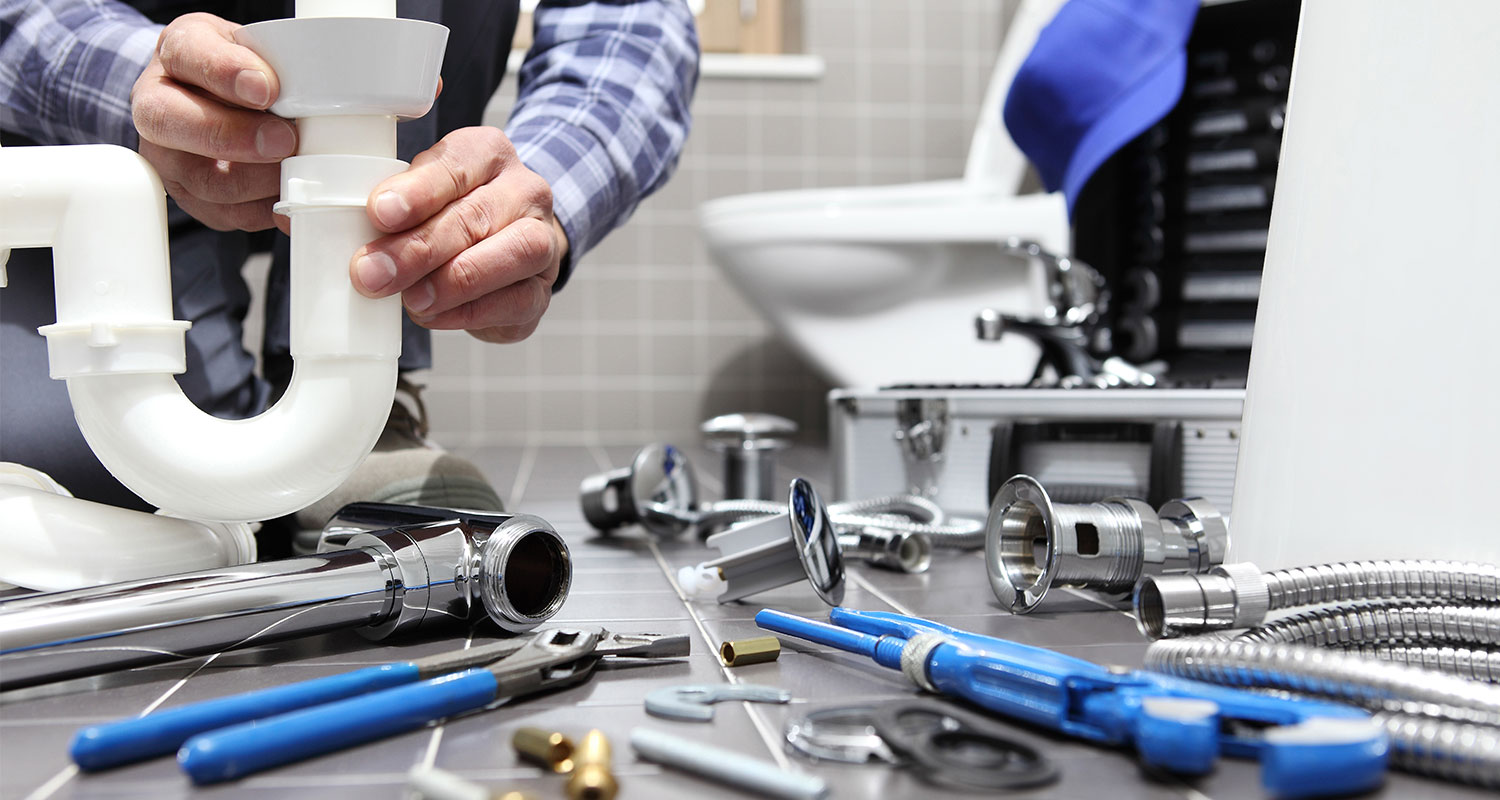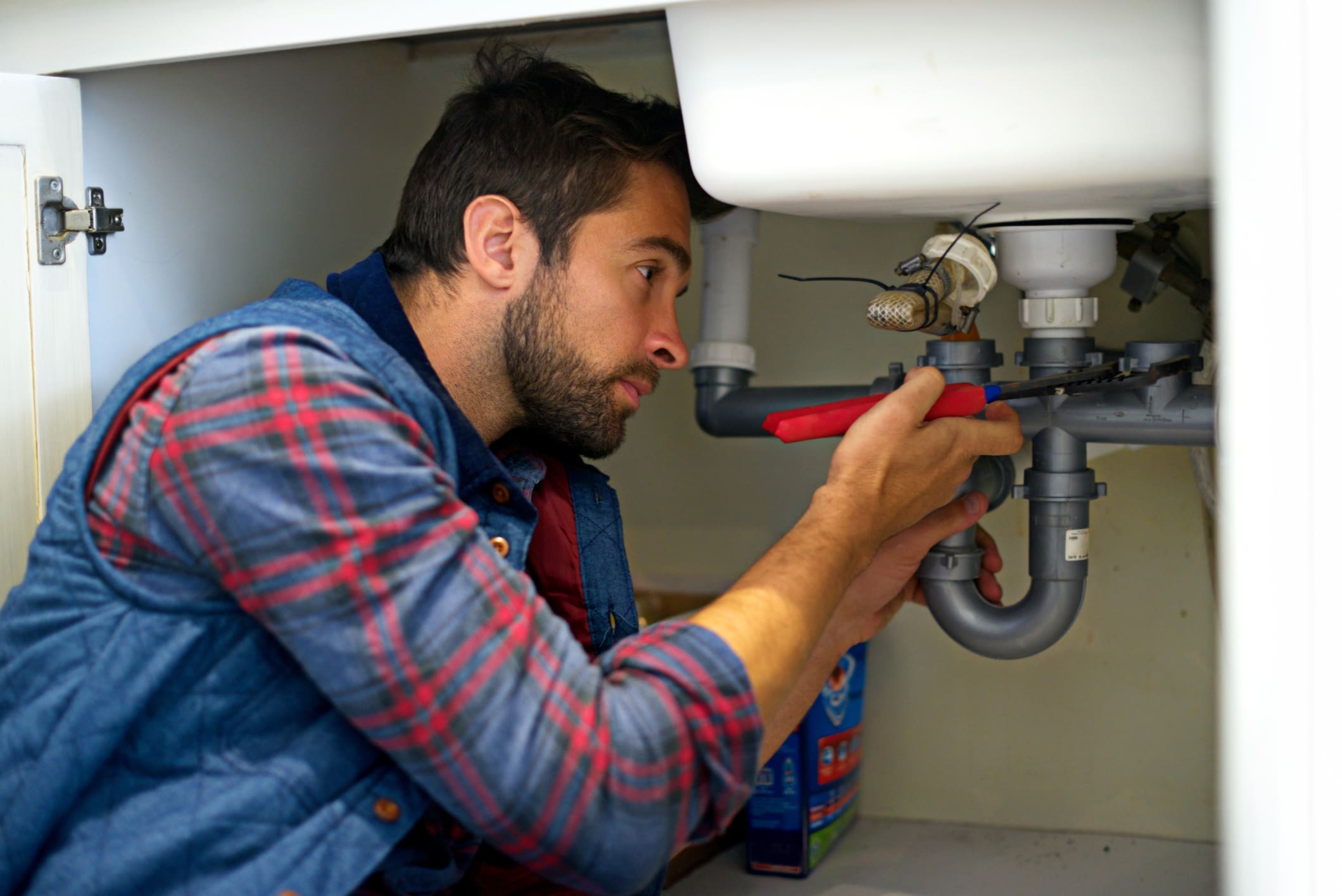Common Plumbing Troubles Every Property Owner Need To Understand
Home owners commonly encounter an array of pipes issues that can interfere with everyday life. Typical issues consist of leaky taps, clogged drains, and running bathrooms. These concerns normally originate from worn-out parts or debris build-up. In addition, low tide pressure and burst pipes can signal much deeper problems. Comprehending these obstacles is important for reliable upkeep. Nonetheless, there are various other much less apparent worries that can arise, which require closer exam.
Dripping Faucets
Leaky taps can be a discouraging hassle for property owners. These persistent trickles not just develop a frustrating audio but also result in drainage and increased energy costs. A dripping faucet usually results from damaged washing machines, O-rings, or seals, which wear away with time due to routine use and direct exposure to water. Sometimes, the faucet's inner elements may be worn away or damaged, necessitating an extra extensive repair work or substitute. Determining the source of the leak is crucial; home owners might need to disassemble the faucet to analyze its components carefully. Regular upkeep can help stop leaks, consisting of cleansing aerators and checking for indicators of wear. Attending to a leaking tap quickly can conserve water and reduce costs, making it a convenient yet important task for homeowners to deal with in keeping their pipes systems efficiently. Correct attention to this usual issue can bring about a much more comfortable living atmosphere.
Obstructed Drains
Several property owners experience the aggravation of stopped up drains at some factor. This common plumbing concern can arise from various reasons, consisting of the accumulation of hair, soap residue, food bits, and oil. These materials can develop blockages that impede the circulation of water, causing slow drain or full stoppage.In cooking areas, oil and food scraps are often the perpetrators, while bathrooms regularly deal with hair and soap buildup. Routine maintenance, such as utilizing drain strainers and avoiding putting fats down the sink, can aid prevent clogs.When a blockage does happen, property owners may try to make use of a plunger or a commercial drainpipe cleaner as first remedies. Consistent concerns might call for specialist assistance to avoid damage to pipes. Understanding the causes and prevention techniques for clogged up drains pipes can conserve home owners time and money, ensuring a smoother plumbing experience

Running Toilets
Running commodes are an usual issue that can come from numerous reasons, consisting of defective flappers and chain issues. The continual running not only wastes water however likewise brings about increased utility expenses. Attending to these concerns promptly can recover and avoid further problems effectiveness to the plumbing system.
Reasons For Running Toilets
A consistent flow of water from a bathroom can be both wasteful and annoying, commonly signaling underlying issues within the plumbing system. One common cause is a worn flapper valve, which may not produce an appropriate seal, permitting water to continuously leak right into the bowl. Additionally, a malfunctioning fill shutoff can cause too much water flow, adding to the problem. Misaligned float mechanisms may likewise trigger the bathroom to run as they fail to regulate the water degree suitably. One more potential issue is mineral build-up, which can block components and hinder their capability. Recognizing these reasons immediately can assist home owners attend to the issue before it rises, making sure efficient procedure of their pipes system.
Consequences of Continuous Operating
Usually ignored, the consequences of a continually running toilet can substantially impact both water use and home expenditures. A running bathroom can squander approximately 200 gallons of water daily, resulting in increased water expenses and unneeded resource intake. This extreme water use not only stresses the family budget yet also contributes to ecological issues, especially in locations encountering water scarcities. In addition, the continuous sound of running water can be a resource of annoyance, interfering with the tranquility of the home - Plumbing. Moreover, extended issues might result in even more significant pipes troubles if left unaddressed, resulting in additional monetary worries. House owners should acknowledge the relevance of prompt fixings to mitigate these unfavorable impacts and preserve an effective pipes system
Dealing With Running Toilet Issues
Toilets that constantly run can be an irritating concern for homeowners, however recognizing the cause is the primary step towards a reliable fix. Typical causes include a damaged flapper, which may not produce a proper seal, enabling water to escape right into the bowl. Property owners should inspect the flapper for wear and replace it if needed. In addition, the fill valve can be malfunctioning, causing excess water to flow continuously. Replacing this component or adjusting may solve the problem. An additional possible wrongdoer is a misaligned float, which can be gotten used to the correct height. Routine maintenance and prompt fixings can stop running toilets, ensuring both water preservation and expense financial savings on energy expenses.
Low Tide Stress
Low water stress can be a frustrating experience for home owners, usually materializing as a weak stream from faucets and showerheads. This concern can come from different causes, including debris accumulation in pipelines, corroded pipes, or problems with the metropolitan water system. Property owners might initially see low water stress in particular locations of the home, but it index can intensify to a more extensive problem if not resolved promptly.In some situations, malfunctioning pressure regulators can also be in charge of inadequate water circulation. Regular upkeep, such as purging the water heating unit and looking for obstructions, can aid reduce these issues. If low tide stress persists, it might be essential to seek advice from a specialist plumber to detect and fix the underlying cause. Identifying the source of reduced water stress is vital for recovering correct water circulation and making sure a functional plumbing system.
Burst Pipeline
Burst pipes can be a severe pipes problem, usually arising from the same factors that add to low tide stress, such as temperature level variations and maturing framework. When water ices up within pipelines, it broadens, boosting stress till the pipeline can no much longer have it, bring about a tear. In addition, deterioration from long term direct exposure to water can deteriorate pipelines, making them prone to rupturing under typical pressure.Homeowners may observe indications of a burst pipe with unexpected water leaks, wet spots on walls or ceilings, and an unanticipated increase in their water costs. Immediate activity is crucial; falling short to attend to a burst pipeline can cause substantial water damage, mold development, and expensive repair work. Regular examinations and upkeep of plumbing systems can help stop this problem. Furthermore, shielding pipes in colder locations and changing old piping can considerably decrease the threat of ruptured pipes, securing the home's plumbing honesty.
Hot Water Heater Issues
Just how can property owners recognize hot water heater problems prior he has a good point to they rise? Regular assessment and upkeep can help discover possible problems early. Property owners must look for signs such as inconsistent water temperature level, uncommon sounds, or a decrease in hot water supply. Leakages or pools around the unit may suggest a breakdown that requires instant interest. The look of corrosion or sediment buildup can likewise indicate the requirement for maintenance.Additionally, home owners should keep an eye on the age of their hot water heater; most devices have a lifespan of 8 to 12 years. If the heater is approaching this age and showing indications of wear, it might be time to review replacement. Routine flushing of the storage tank can stop debris accumulation, lengthening the device's life. By continuing to be attentive and addressing concerns without delay, homeowners can stay clear of pricey fixings and assure their hot water heater runs effectively for many years to come.
Sewer Line Problems
Several home owners might come across sewer line problems at some time, influencing their pipes system's general performance. Usual concerns include blockages, tree origin invasions, and pipe damage. Clogs usually arise from the build-up of oil, hair, and international items that obstruct the circulation of wastewater. Tree origins can infiltrate sewer lines, causing splits and leakages. In addition, aging pipelines might damage or corrode, leading to additional problems (Drain Services). Indications of sewage system line difficulty include sluggish drains, undesirable odors, and sewer backups, which can pose wellness risks. Homeowners must deal with these problems without delay to prevent extensive damages and expensive repair services. Regular upkeep, such as scheduled inspections and cleaning, can assist protect against significant concerns. In severe situations, specialist intervention might be essential to repair or replace broken sections of the drain line. Recognizing these potential issues can assist property owners take aggressive measures to preserve their pipes systems properly
Frequently Asked Concerns
Exactly How Can I Protect Against Plumbing Problems in My Home?
To stop pipes troubles, normal maintenance is vital. Home owners should check pipelines for leakages, tidy drains, and monitor water pressure. In addition, enlightening themselves regarding appropriate use can considerably decrease the danger of future pipes issues.
When Should I Call a Plumber As Opposed To Repairing It Myself?
Determining when to call a plumbing often depends on the seriousness of the problem. Considerable leaks, consistent blockages, or unfamiliar problems warrant professional assistance, making certain safety and preventing more damages as opposed to running the risk of personal attempts at fixing.
What Are the Indicators of Hidden Plumbing Leaks?
Signs of hidden pipes leakages consist of unexplained water bills, wet spots on ceilings or visit their website wall surfaces, mold development, and a stuffy odor. These indicators frequently recommend underlying problems that require professional analysis and repair work for resolution.
How Usually Should I Have My Pipes Examined?
Normal plumbing evaluations are recommended each to two years. This regularity aids identify possible issues early, ensuring the system continues to be efficient and reducing the threat of costly repairs or unanticipated emergencies in the future.
Exist DIY Solutions for Minor Pipes Issues?

Comments on “Plumbing Emergencies That Demand an Expert Plumber—Not Google”